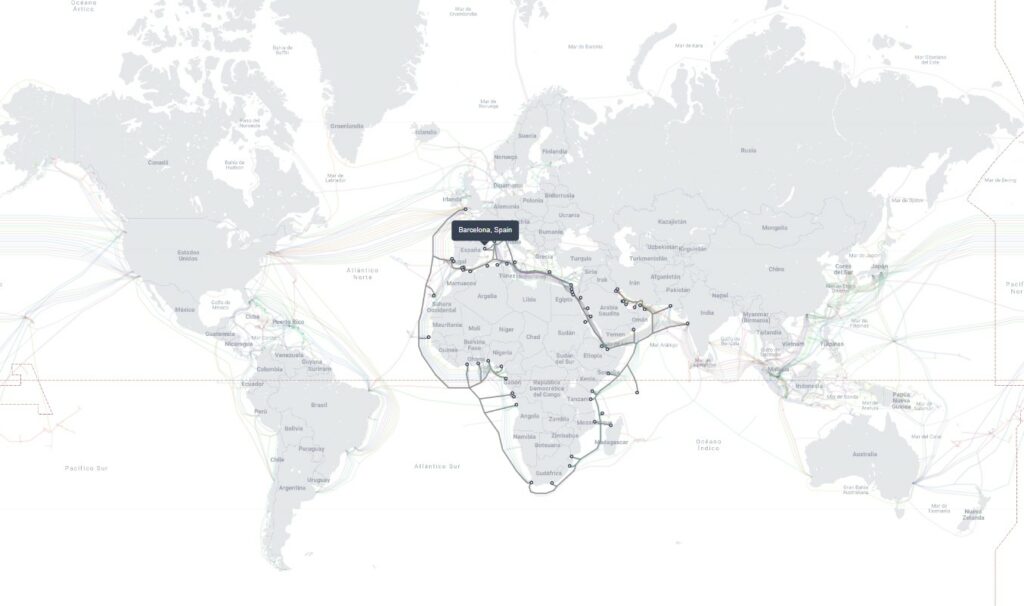Submarine cables
If we ask on the street how data travel between Europe and America or Asia, most people would tell us via satellite. The reality is quite different, 98% of the data intercontinental transference is done through submarine cables. There is a gigantic network of cables that redundantly guarantee this service.

The transmission capacity of these cables is absolutely amazing. In 2022, a 6,600 km long cable, owned by Google, has been inaugurated between Sopelana beach in Vizcaya and Shirley in the state of New York. The cable is about 20mm wide in diameter and has 16 pairs of fibers inside. The capacity of the whole cable is 340 million Tbits/sec. It could support each Spanish person transmitting 2,000 videos in HD simultaneously. This is the capacity we are talking about.
Submarine cables are thin, about eight centimetres in diameter, and filled with filaments the width of a human hair. They can be short, like the one that runs between Ireland and the UK. Or very long, such as those connecting Asia to the United States, which are more than 16 000 km long.
Submarine cables have several features that make them somewhat special. It is a multilayer cable, in the case of the cable we are talking about, with 8 layers:
In addition, the cable is buried in the seabed in areas close to the coast where the risks are greater. This structure and materials ensure the durability of the cable.
The distances are so long that intermediate signal amplifiers must be provided to compensate for attenuations due to the length of the cable.
There are more than 400 submarine cables in the world, the longest of which are about 20,000 km long, linking the USA with various parts of Asia.

The first transcontinental fibre optic submarine cable was deployed between the USA, Great Britain and France in 1988, the project was called TAT-8 and was in service until 2002. It allowed up to 40,000 telephone lines to be connected simultaneously, with a transmission rate of 300 Mbit/second, less than a third of the transmission rate we have today in our homes.
This cable operated for 14 years and in 2001 the TAT-14 already had 3.2 TB. Four times more capacity in 12 years. For the record, it is worth recalling that in 1995, 50% of communications data transmission was done via submarine cables and the other 50% using satellites. Today, this has completely changed: cables account for 95%.
The first submarine cables in Spain were deployed by Telefónica, in collaboration with the North American AT&T, at the end of the 1980s to serve the Canary Islands, later the Balearic Islands were also covered and Almería was connected with Melilla.
On reaching the continents, the cables are connected to stations, which regenerate the optical signal, separate it into channels and then distribute it to end consumers.

Keynet Systems F22 cable is a 250μ” dielectric double sheathed loose fibre cable. It has fibres distributed in several PBT tubes filled with water-repellent gel.
This cable is used in ducting and its characteristics allow it to be a highly guaranteed submarine cable.
